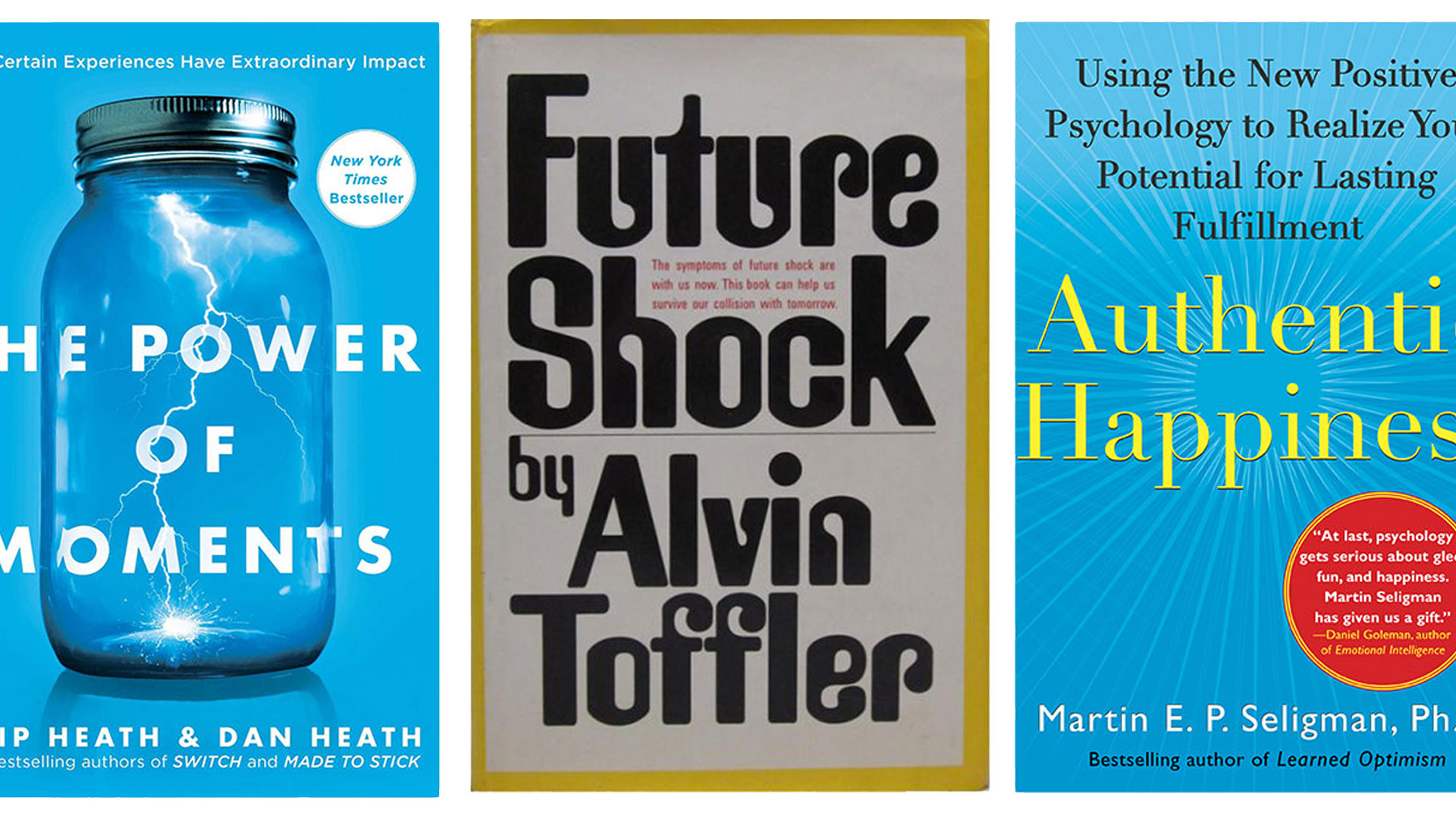Part of our mission at The WXO is to define and raise the profile of the Experience Economy, in order to raise the impact of experiences to increase profit, improve wellbeing, and create a better society.
To do this, we believe we need the language and the tools to describe it (for more along these lines, see our discussion of the need for an immersive taxonomy in Campfire 20: The Immersive Firestarter and proving the value of experiences in Campfire 22: New Metrics For A New Ecoomy).
So to help move us towards this goal, experience design professor and author Bob Rossman and visual thinkologist Kevin Dulle have put together the WXO Dictionary: the definitive dictionary of definitions and descriptions of “experience” and “experience design“. They’ve trawled books and academic journals to enable us to better communicate what we do. So without further ado…
Definitions From Books
1970
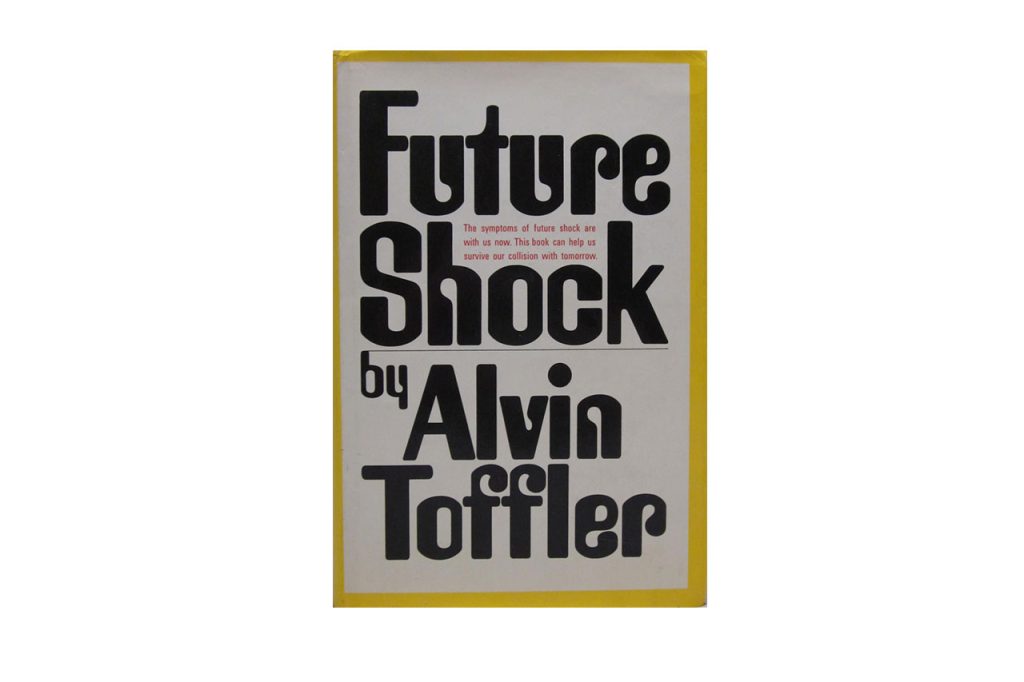
Toffler, A. (1970). Future Shock. NY, NY: Random House.
“…we shall also witness a revolutionary expansion of certain industries whose sole output consists not of manufactured goods, not even services, but of pre-programmed ‘experiences’. …The experience industry could turn out to be one of the pillars of super-industrialism, the very foundation, in fact, of the post-service economy.” (p. 226)
Toffler, A. (1970). Future Shock
1990
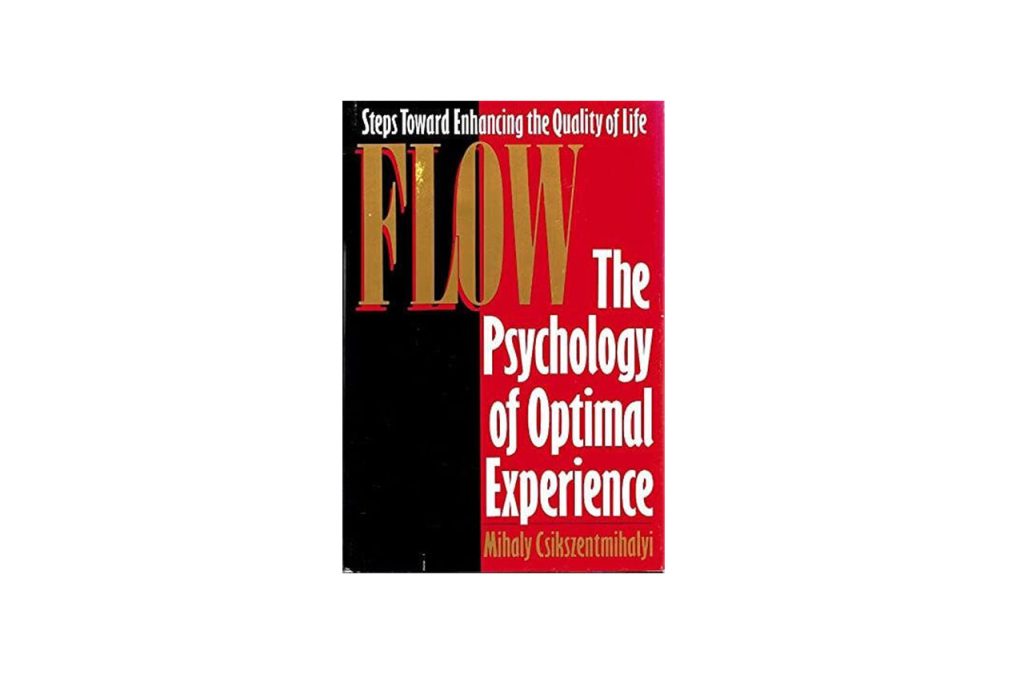
Csikszentmihalyi, M. (1990). Flow; the psychology of optimal experience. NY, NY: Harper & Row.
“Given the recurring need to return to this central question of how to achieve mastery over one’s life, what does the present state of knowledge say about it? ….As suggested before, the way is through control over consciousness, which in turn leads to control over the quality of experience. …Before starting to explore ways in which to improve the quality of experience, it will be useful to review briefly how consciousness works and what it actually means to have ‘experience.’
…With this framework in mind, what, then does it mean to be conscious? It simply means that certain specific conscious events (sensations, feelings, thoughts, intentions) are occurring, and that we are able to direct their course.” (p. 22)
Csikszentmihalyi, M. (1990). Flow; the psychology of optimal experience
Chapter 2, The Anatomy of Consciousness, explains the psychological genesis of experience, how consciousness and attention generate experience:
“At the same time, we should also recognize that the way in which consciousness works is not entirely controlled by its biological programming—in many important respects that we shall review in the pages that follow, it is self-directed. In other words, consciousness has developed the ability to override its generic instructions and to set its own independent course of action.” (p. 24)
Csikszentmihalyi, M. (1990). Flow; the psychology of optimal experience
“This representation of consciousness is phenomenological in that it deals directly with events—phenomena—as we experience and interpret them, rather than focusing on the anatomical structures, neurological processes, or unconscious purposes that make these events possible.” (p. 26)
Csikszentmihalyi, M. (1990). Flow; the psychology of optimal experience
“We have seen that experience depends on the way we invest psychic energy—on the structure of attention.” (p. 35)
Csikszentmihalyi, M. (1990). Flow; the psychology of optimal experience
1995
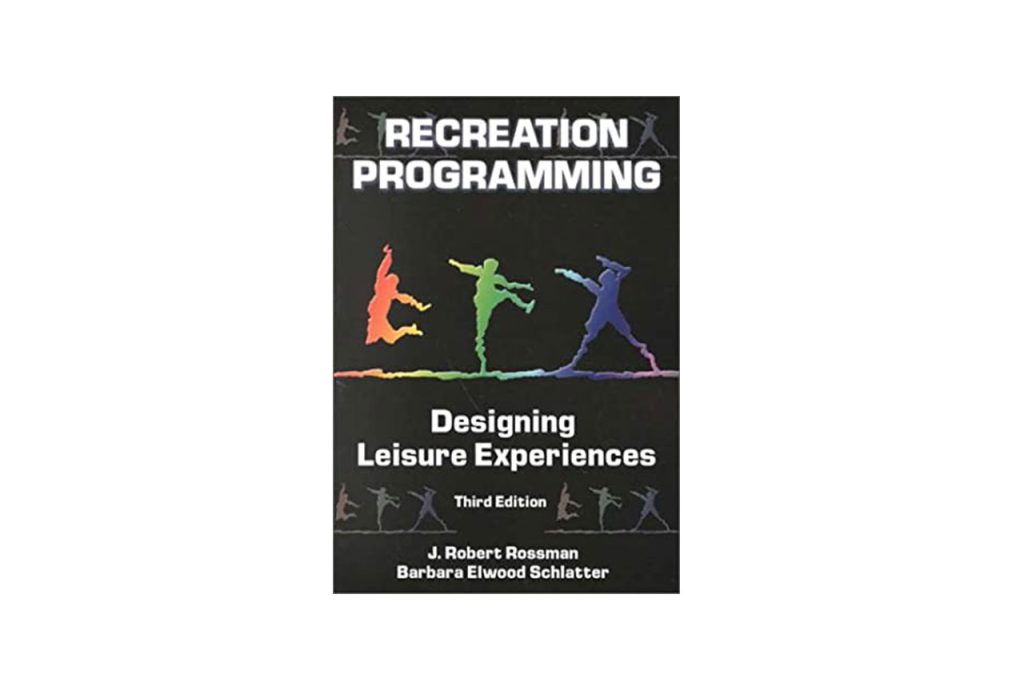
Rossman, J. R. (1995). Recreation Programming: Designing leisure experiences. Champaign, IL: Sagamore Publishing.
Defining a specific form of experience, a leisure experience:
“Overall, then, to experience leisure, an individual must freely choose to engage an environment and perceive that the engagement provides intrinsic satisfaction that will both reward and sustain the engagement. Intrinsic satisfaction partly results from experiences that provide opportunities for positive affect; i.e., self-directing the outcome of the engagement. Experiencing leisure is something that individuals do, not something programmers (sic experience designers) do to individuals.” (p. 11)
Rossman, J. R. (1995). Recreation Programming: Designing leisure experiences
1999
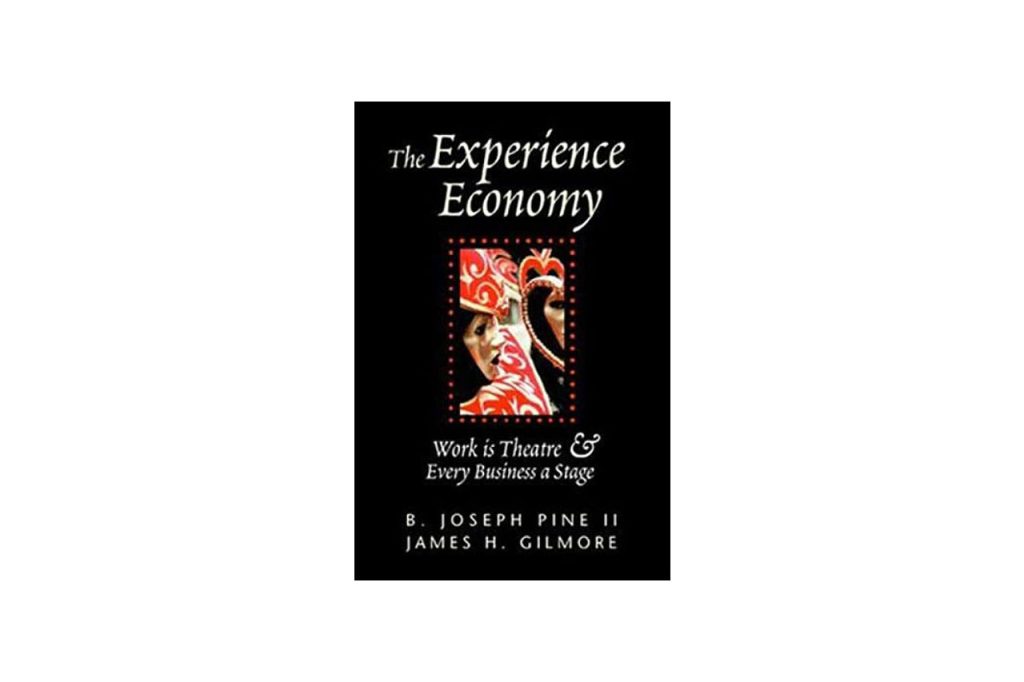
Pine, B.J., and Gilmore, J. H. (1999). The Experience Economy; Work is theatre & every business a stage. Boston, MA: Harvard Business School Press.
“When a person buys a service, he purchases a set of intangible activities carried out in his behalf. But when he buys an experience, he pays to spend time enjoying a series of memorable events that a company stages—as in a theatrical play—to engage him in a personal way.” (p. 2)
Pine, B.J., and Gilmore, J. H. (1999). The Experience Economy; Work is theatre & every business a stage
“The newly identified offering of experiences occurs whenever a company intentionally uses services as the stage and goods as the props to engage an individual.” (p. 11)
Pine, B.J., and Gilmore, J. H. (1999). The Experience Economy; Work is theatre & every business a stage
“No two people can have the same experience—period. Each experience derives from the interaction between the staged event and the individual’s prior state of mind and being.” (p. 12)
Pine, B.J., and Gilmore, J. H. (1999). The Experience Economy; Work is theatre & every business a stage
“While the experience itself lacks tangibility, people greatly value the offering because its value lies within them, where it remains long afterward.” (p. 13)
Pine, B.J., and Gilmore, J. H. (1999). The Experience Economy; Work is theatre & every business a stage
Two cautions from Pine and Gilmore:
- Services are not an experience.
“Experiences are a fourth economic offering, as distinct from services as services are from goods, but one that has until now gone largely unrecognized.” (p. 2)
Pine, B.J., and Gilmore, J. H. (1999). The Experience Economy; Work is theatre & every business a stage
2. Entertainment is not an experience.
“That means not making the mistake we see time and time again: equating experiences with entertainment.” (p. 29)
Pine, B.J., and Gilmore, J. H. (1999). The Experience Economy; Work is theatre & every business a stage
Schmitt, B. H. (1999). Experiential Marketing. NY, NY: The Free Press.
“Experiences are private events that occur in response to some stimulation (e.g., as provided by marketing efforts before and after purchase). Experiences involve the entire living being. They often result from direct observation and/or participation in events—where they are real, dreamlike, or virtual.
…Experiences are usually not self-generated but induced.
…As a marketer, you provide stimuli that result in customer experiences; you select the “experience providers”. You are in charge. …. This does not mean that the customer is passive. It means that you have to take the first action.
…Experiences may be viewed as complex, emerging structures. Emerging structures in the physical world display what is called “perpetual novelty”. That is, no two experiences are exactly alike.” (pp. 60-61)
Schmitt, B. H. (1999). Experiential Marketing
2001
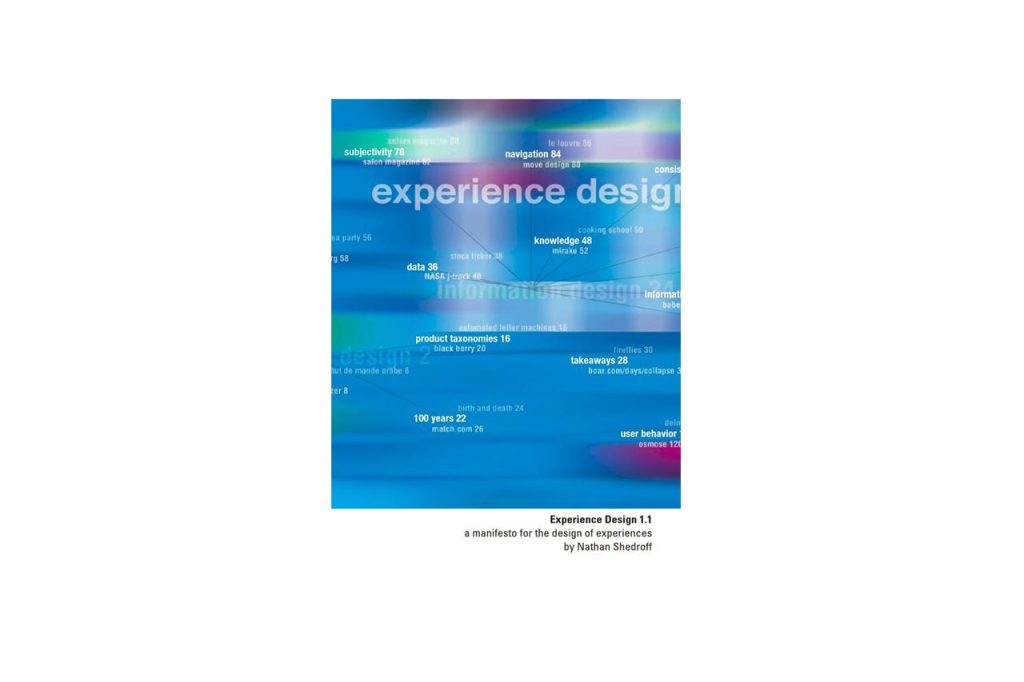
Shedroff, N. (2001). Experience Design 1. Indianapolis, IN: New Riders.
“While everything, technically, is an experience of some sort, there is something important and special to many experiences that make them worth discussing. In particular, the elements that contribute to superior experiences are knowable and reproducible, which make them designable.” (p. 2)
Shedroff, N. (2001). Experience Design 1
“Experience designers must regard their audiences as active participants—not passive viewers. Many real-space experiences (such as parties and other events versus art displays or theater) require participation in order to be successful. These are often the most satisfying experiences.” (p. 148)
Shedroff, N. (2001). Experience Design 1
“In your life, you probably will never have a more interactive experience than a conversation with someone in front of you—especially if he or she is in front of you (as opposed to conversing over the phone or via a computer).” (p. 180)
Shedroff, N. (2001). Experience Design 1
“Participation is the key to many successful experiences—certainly those that are intentionally designed in such a way that they could not exist without the participation of their audience. …Many experiences couldn’t survive—or even exist—without the involvement of their audiences. Most experiences could also be made better by redesigning them to include opportunities for participation on the part of the audience.” (p. 202)
Shedroff, N. (2001). Experience Design 1
2002
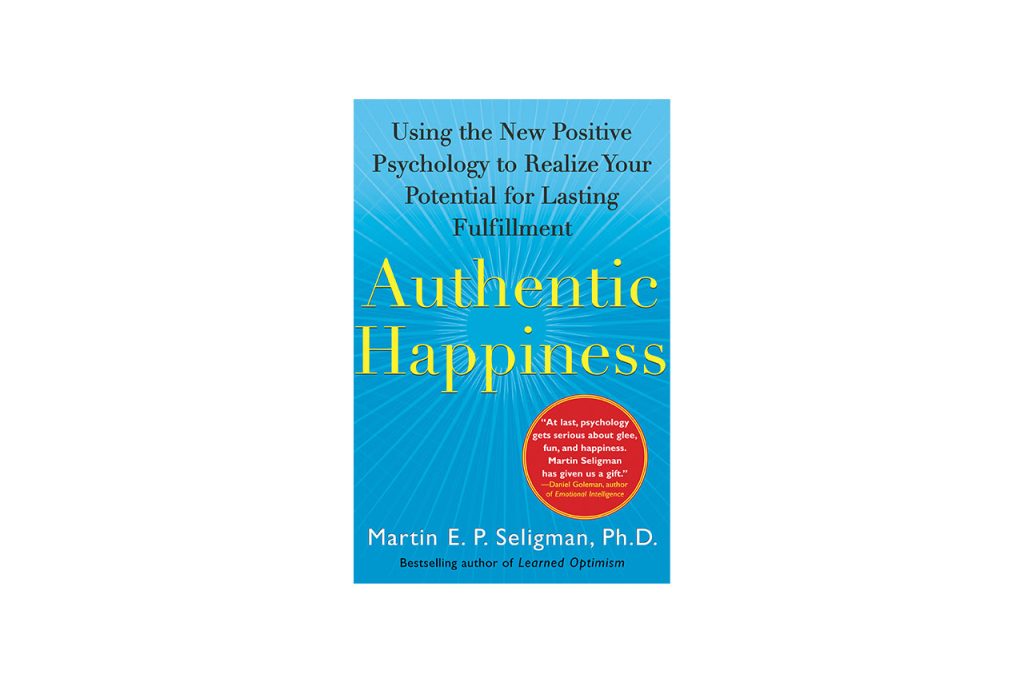
Seligman, M.E.P. (2002). Authentic Happiness: Using the new Positive Psychology to realize your potential lasting fulfillment. NY, NY: Free Press.
“Experiences that induce positive emotion cause negative emotion to dissipate rapidly.” (p. xiv)
Seligman, M.E.P. (2002). Authentic Happiness: Using the new Positive Psychology to realize your potential lasting fulfillment
“Authentic happiness comes from identifying and cultivating your most fundamental strengths and using them every day in work, love, play, and parenting.
Positive Psychology has three pillars: First is the study of positive emotion. Second is the study of positive traits, foremost among them the strengths and virtues, but also the “abilities” such as intelligence and athleticism. Third is the study of the positive institutions, such as democracy, strong families, and free inquiry, that support the virtues, which in turn support the positive emotions.” (p. xiii)
Seligman, M.E.P. (2002). Authentic Happiness: Using the new Positive Psychology to realize your potential lasting fulfillment
2007
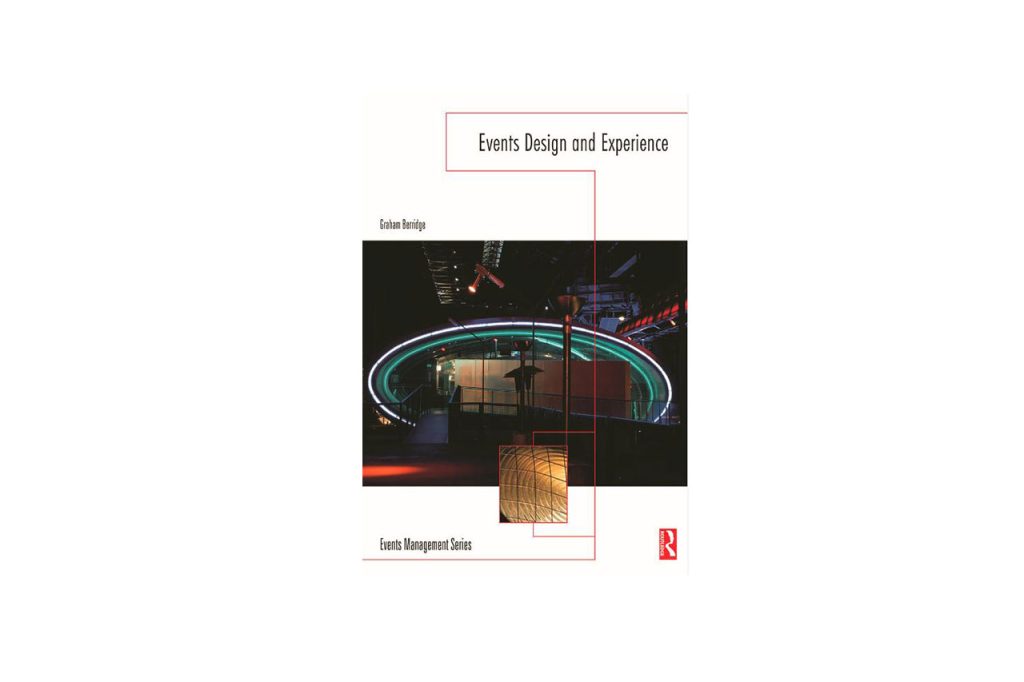
“Satisfaction is reached through interactive engagement, but there is not a list of attributes that we can automatically put into an activity to ensure this will happen. This is because of the personal interaction of satisfaction and because different types of activities equally produce optimal experience (Csikszentmihalmy, 1991).
This occurs as a result of our perception of any given situation, a perception that is constructed through interaction in a social occasion (Rossman, 2003). Thus there is potential for many different levels of experience within any single occasion as a result of the different experiences we have had previously. …No matter the route, in order to experience an event we have to engage with and interpret it (Rossman, 2003).
This means not just the physical engagement but also the act of mentally responding to what is placed before us. In this act of response we focus our attention on the event or activity and begin to assess the information provided about. This in turn leads onto our interpretation of it, where we make meaning out of the information and lastly we decide what action to take and make a decision (Kelly, 1999). This act of denotative processing and subsequent ordering of information is a vital aspect of experience formation (Csikszentmihaly, 1991).” (pp. 71-72)
Berridge, G. (2007). Events Design and Experience
Weaver, S. (2007). Creating Great Visitor Experiences; A guide for museums, parks, zoos, gardens, & libraries. Walnut Creek, CA: Left Coast Press
“Crafting a great experience for your visitors is the key element to setting yourself apart from all other choices.” (p. 15)
Weaver, S. (2007). Creating Great Visitor Experiences; A guide for museums, parks, zoos, gardens, & libraries
“Human interaction is the key component of the visitor experience. It’s your brand come to life.” (p. 52)
Weaver, S. (2007). Creating Great Visitor Experiences; A guide for museums, parks, zoos, gardens, & libraries
2008
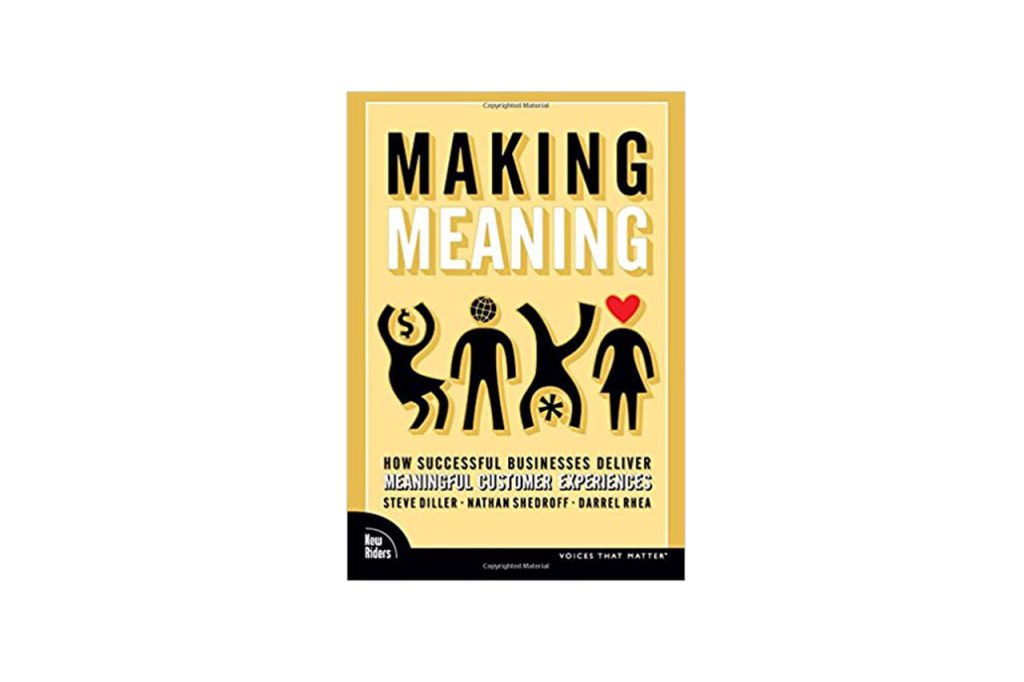
Diller, S., Shedroff, N., & Rhea, D. (2008). Making Meaningful; How successful businesses deliver meaningful customer experiences. Berkley, CA; New Riders.
“’Experience’ is a term that has spread throughout the business world with increasing frequency over the course of the past decade—somewhat to the detriment of the concept. …For all the interest in the concept of the customer experience, however, there’s been little concrete discussion of how it’s achieved.” (p. 3)
Diller, S., Shedroff, N., & Rhea, D. (2008). Making Meaningful; How successful businesses deliver meaningful customer experiences
“From a marketing and design perspective, an experience is an engagement delivered to the customer through an integrated system of “touch points”—product, packaging, message, customer service, and so on—that conveys or evokes a consistent sense of essence.” (p. 19)
Diller, S., Shedroff, N., & Rhea, D. (2008). Making Meaningful; How successful businesses deliver meaningful customer experiences
2010
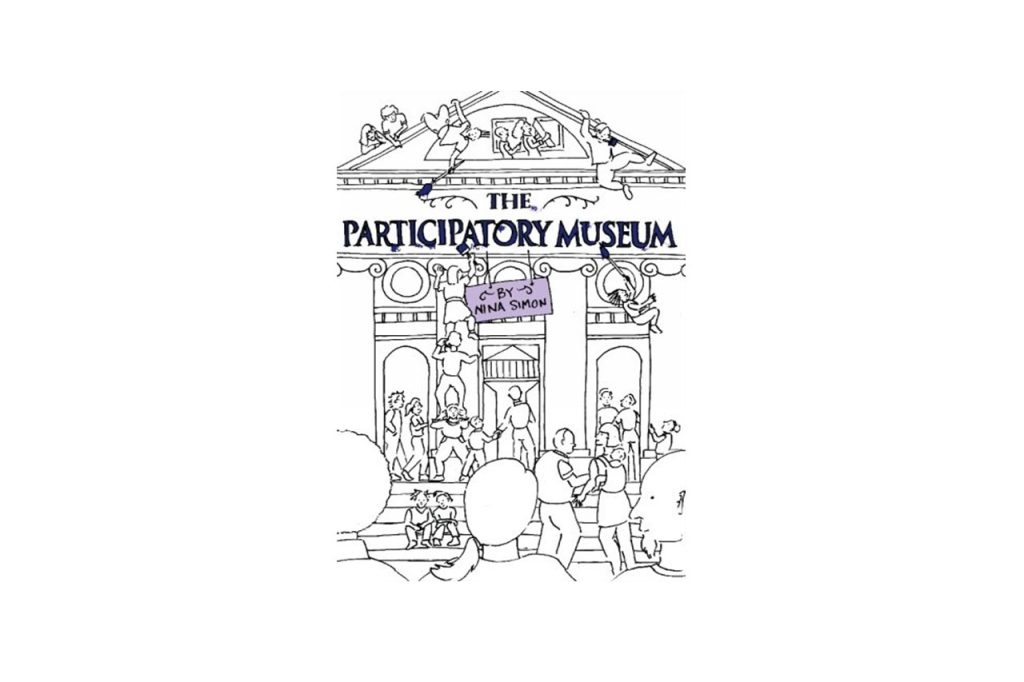
Simon, N. (2010). The Participatory Museum. Santa Cruz, CA: Museum 2.O.
Simon calls for transforming museums from passive to actively engaged cultural events and institutions:
“…by inviting people to actively engage as cultural participants, not passive consumers. As more people enjoy and become accustomed to participatory learning and entertainment experiences, they want to do more than just “attend” cultural events and institutions.
…When people can actively participate with cultural institutions, those places become central to cultural and community life.” (p. ii)
Simon, N. (2010). The Participatory Museum
“The goal of participatory techniques is both to meet visitor’s expectations for active engagement and to do so in a way that furthers the mission and core values.” (p. iii)
Simon, N. (2010). The Participatory Museum
Simon writes about the dilemma for organizations who offer participatory rather than presented material:
“In contrast, in participatory projects, the institution supports multi-directional content experiences. The institution serves as a “platform” that connects different users who act as content creators, distributors, consumers, critics, and collaborators. This means the institution cannot guarantee the consistency of visitor experiences. Instead, the institution provides opportunities for diverse visitor co-produced experiences.” (p. 2)
Simon, N. (2010). The Participatory Museum
Shirky, C. (2010). Cognitive Surplus: Creativity and generosity in a connected age. NY, NY: The Penguin Press.
A communications professor whose expertise is in interactive telecommunications commenting on a major difference between one way communication like watching commercial television versus interactive communications wherein people participate in interaction:
“Participants are different. To participate is to act as if your presence matters, as if, when you see something or hear something, your response is part of the event.” (p. 21)
Shirky, C. (2010). Cognitive Surplus: Creativity and generosity in a connected age
2011
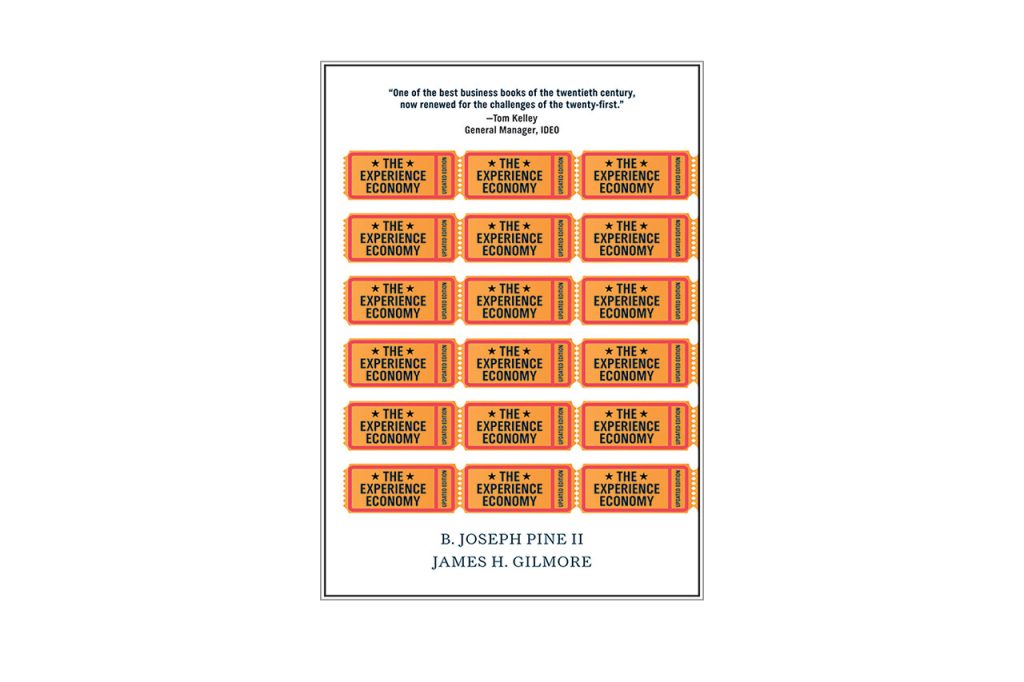
Pine, B.J, & Gilmore, J. H. (2011). The Experience Economy; Updated edition. Boston, MA: Harvard Business Review Press.
Pine and Gilmore comment on the lack of adoption of their recommendations from the original edition:
“Although the book has since been published in fifteen languages and purchased by more than three hundred thousand people world-wide, the book’s thesis has not sufficiently penetrated the minds of enough business leaders (and policy makers) to give full bloom to a truly new—and desperately needed economic order.
…So let us here be most clear: goods and services are no longer enough to foster economic growth, create new jobs, and maintain economic prosperity. To realize revenue growth and increased employment, the staging of experiences must be pursued as a distinct form of economic output. Indeed, in a world saturated with largely undifferentiated goods and services the greatest opportunity for value creation resides in staging experiences.” (p. ix)
Pine, B.J, & Gilmore, J. H. (2011). The Experience Economy; Updated edition
2015
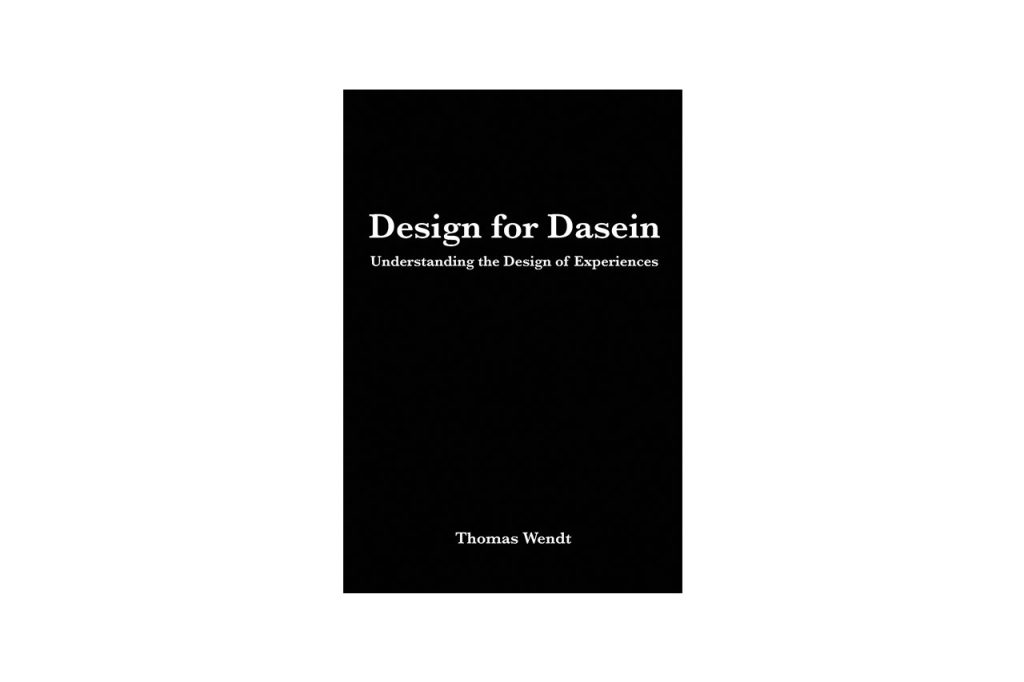
Wendt, T. (2015). Design for Dasein; Understanding the design of experiences. Self-published by Thomas Wendt.
Criticism of the extant literature in the field. Commenting on positive reactions to the author’s speeches about experience design:
“Reactions like these tell me that there are others with latent interest in the theoretical aspects of experience design; that others in the experience design community find value beyond recipe books, case studies, and the often decontextualized “best practices”. (p. 7)
Wendt, T. (2015). Design for Dasein; Understanding the design of experiences
Observation about experience design:
“A scientist examines the natural world and attempts to draw conclusions, extrapolating existing knowledge to provide a consistent notion of truth. A designer, on the other hand, examines the natural world and attempts to create future scenarios, eventually designing conditions for those scenarios—the key difference being analyzing what is (science) versus what could be (design).” (p. 50)
Wendt, T. (2015). Design for Dasein; Understanding the design of experiences
2016
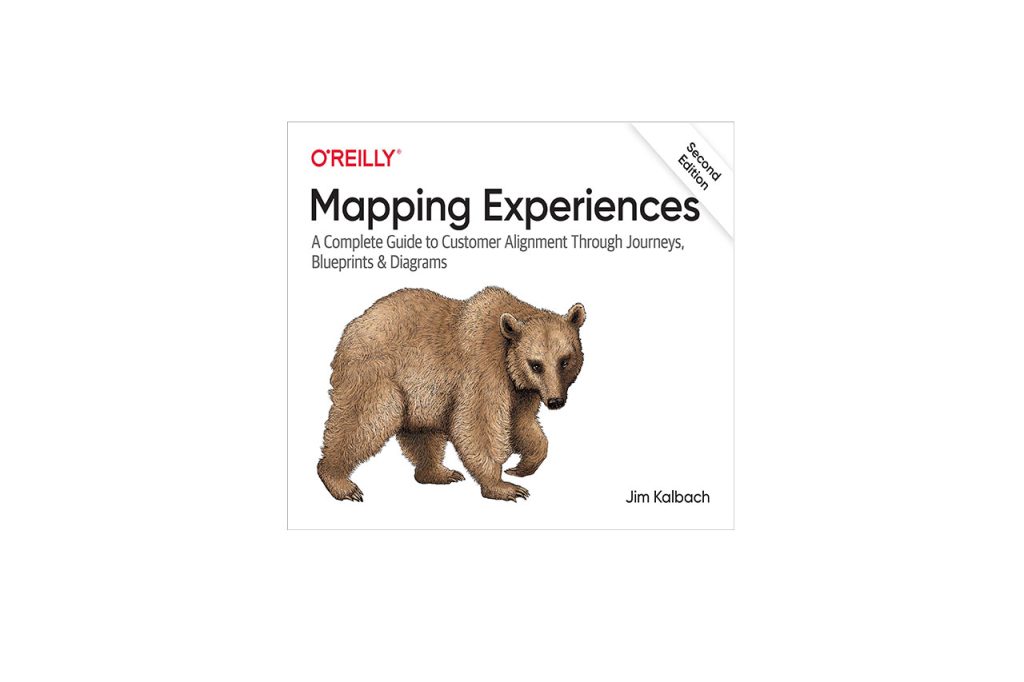
Kalbach, J. (2016). Mapping Experiences. Boston, MA: O’Reilly.
“The term experience defies precise definition. Still, we can point to some common aspects to better understand it:
Experiences are holistic.
The notion of an experience is by its nature all-encompassing including actions, thoughts, and feelings over time.
Experiences are personal.
An experience is not an objective property of a product or service; it’s the subjective perception of the individual.
Experiences are situational.
Like rollercoasters, but not immediately after eating a large meal. In one case, the experience is exhilarating; in the other, it’s a dreadful few minutes of nausea. The rollercoaster didn’t change, the situation did. Experiences differ from situation to situation. Circumstance drives experience more than disposition.” (p. 20)
Kalbach, J. (2016). Mapping Experiences
Pennington, A. (2016). The Customer Experience Book; How to design, measure and improve customer experience in your business. NY, NY: Pearson.
“The simple fact is that most companies do not think through the actual experience that they want to deliver at key times and so they do not actively design that experience.” (p. 3)
Pennington, A. (2016). The Customer Experience Book; How to design, measure and improve customer experience in your business
The definition takes place through a series of quotes through the first chapter:
The customer experience environment begins when you focus your senior team on “…the way that your company interacts with customers,….” (p. 4) This effort is enhanced when the team shows how “…focusing on high-value interactions can have exponential impact on customer behavior.” (p. 4)
Pennington, A. (2016). The Customer Experience Book; How to design, measure and improve customer experience in your business
“The business of actively designing an experience begins with the building of the expectation of what that experience will be.” (p. 4)
Pennington, A. (2016). The Customer Experience Book; How to design, measure and improve customer experience in your business
“The Customer Experience Challenge
The challenge is to understand where the inflection points are; that is, where the customer has a high expectation and engagement and the business fails to meet those expectations during the customer journey. This is an easy way to provide early definition of where to make the major investment in the active design of the experience.
The reality is that not all interactions are equal in terms of their impact on customers; intuitively we all understand that to be the case, but how do you highlight the critical interactions in your particular business?” (p. 9)
Pennington, A. (2016). The Customer Experience Book; How to design, measure and improve customer experience in your business
2017
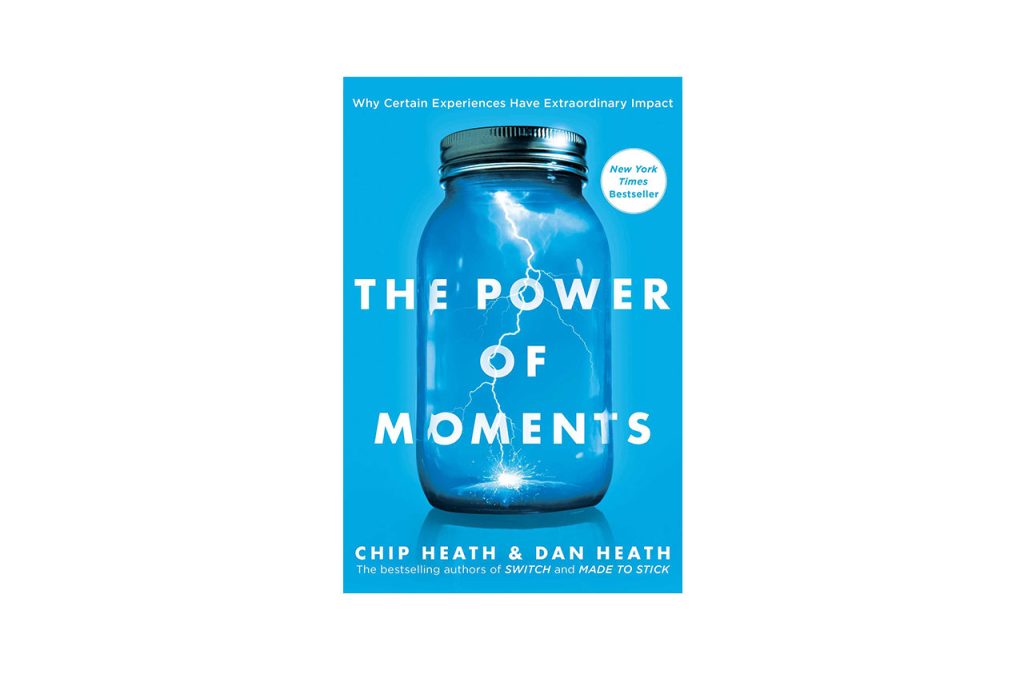
Heath, C., & Heath, D. (2017). The Power of Moments; Why certain experiences have extraordinary impact. NY, NY: Simon & Schuster.
The Heath brothers define a unique experience they call a “defining moment”:
“…a defining moment is a short experience that is both memorable and meaningful.” (p. 12)
Heath, C., & Heath, D. (2017). The Power of Moments; Why certain experiences have extraordinary impact
“In our research, we have found that defining moments are created from one of more of the following four elements:
ELEVATION: Defining moments rise above the everyday. ….Moments of elevation transcend the normal course of events; they are literally extraordinary.
INSIGHTFUL: Defining moments rewire our understanding of ourselves or the world.
PRIDE: Defining moments capture us at our best—moments of achievement, moments of courage.
CONNECTION: Defining moments are social: weddings, graduations, baptisms, vacations, work triumphs, bar and bat mitzvahs, speeches, sporting events.
Defining moments possess at least one of the four elements above, but they need not have all four.” (pp. 12—14)
Heath, C., & Heath, D. (2017). The Power of Moments; Why certain experiences have extraordinary impact
2019
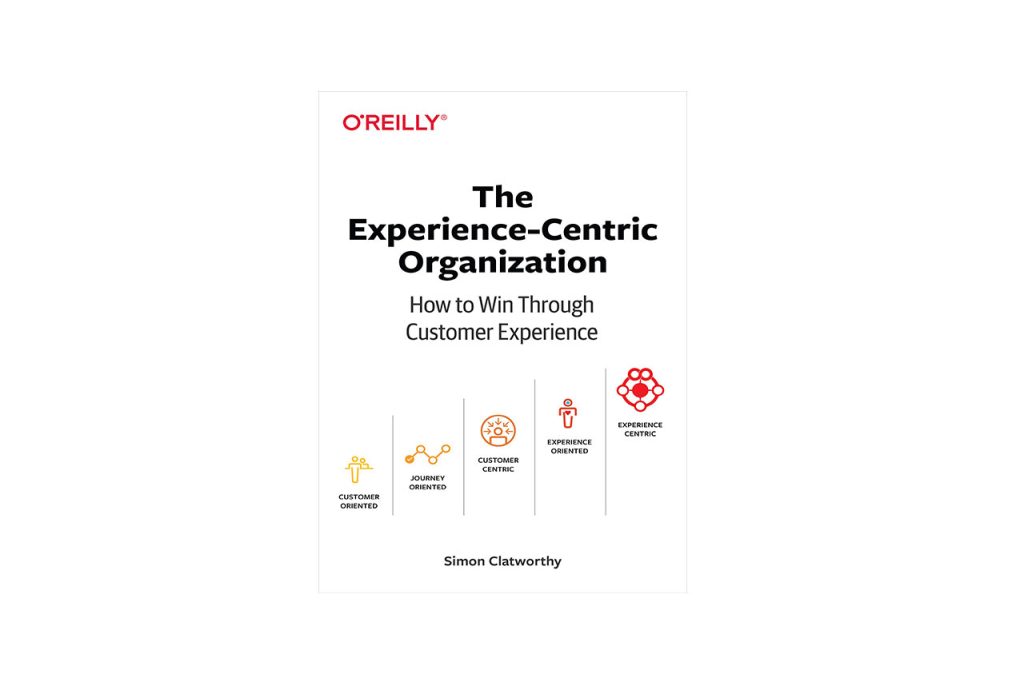
Clatworthy, S. (2019). The Experience-Centric Organization; How to win through customer experience. Boston, MA: O-Reilly.
Clatworthy discusses forces moving us toward experience-centric organizations:
“On the one hand, hypercompetition means that customers have their choice of providers and thus can choose the experience they prefer. Differentiation in the market comes, therefore, from a superior customer experience. On the other hand, companies are inventing in improving their customer experience, and there is now a race to differentiate experiences. …This new focus requires understanding the interactions that the customer has each and every time they use your service, as well as different organizational structure. That is, it demands an alignment within the organization around the experience you want your customer to have.
A second, parallel development relates to branding. …Branding is moving from promising a customer experience to delivering a customer experience.
A third experience trajectory is the experience economy itself. …We have opened our eyes to experiences, and at the same time, better experiences are available. Competition is now evaluated through customer experience.
Finally, technological advances mean that today almost all products and services function adequately. …This frees us up to focus on how it makes us feel, rather than what it does.
Together these developments have created a new paradigm in society, one in which the customer experience is he main motivator of our choices and therefore the key differentiator in the market.” (pp. 7-9)
Clatworthy, S. (2019). The Experience-Centric Organization; How to win through customer experience
Rossman, J.R., & Duerden, M.D. (2019). Designing Experiences. NY, NY: Columbia Business School Publishing.
Rossman and Duerden provide definitions for experience and experience design that are the foundation of the book that presents a process for designing experience.
Experience:
“Experience is a unique interactional phenomenon resulting from conscious awareness and reflective interpretation of experience elements that is sustained by a participant, culminating in personally perceived results and memories.” (p. 10)
Rossman, J.R., & Duerden, M.D. (2019). Designing Experiences
Experience design:
“Experience design is the process of intentionally orchestrating experience elements to provide opportunities for participants to co-create and sustain interactions that lead to results desired by the participant and the designer.” (p. 14)
Rossman, J.R., & Duerden, M.D. (2019). Designing Experiences
Wallman, J. (2019). Time and How to Spend It; The 7 rules for richer, happier days. London, UK: WH Allen.
Wallman defines “experience intelligence”:
“I define this as having the ability to recognize good and bad experiences, to discriminate among them and to use this information to effectively guide your thinking and actions.” (p. 30)
Wallman, J. (2019). Time and How to Spend It; The 7 rules for richer, happier days
“…there are now people out there making up pointless experiences just to keep us all watching, clicking, spending, hooked, mindless.” (p. 14)
Wallman, J. (2019). Time and How to Spend It; The 7 rules for richer, happier days
Wallman asserts that having good “experience intelligence” helps one make good choices and keep engaged in useful experiences that build resiliency and happiness.
2020
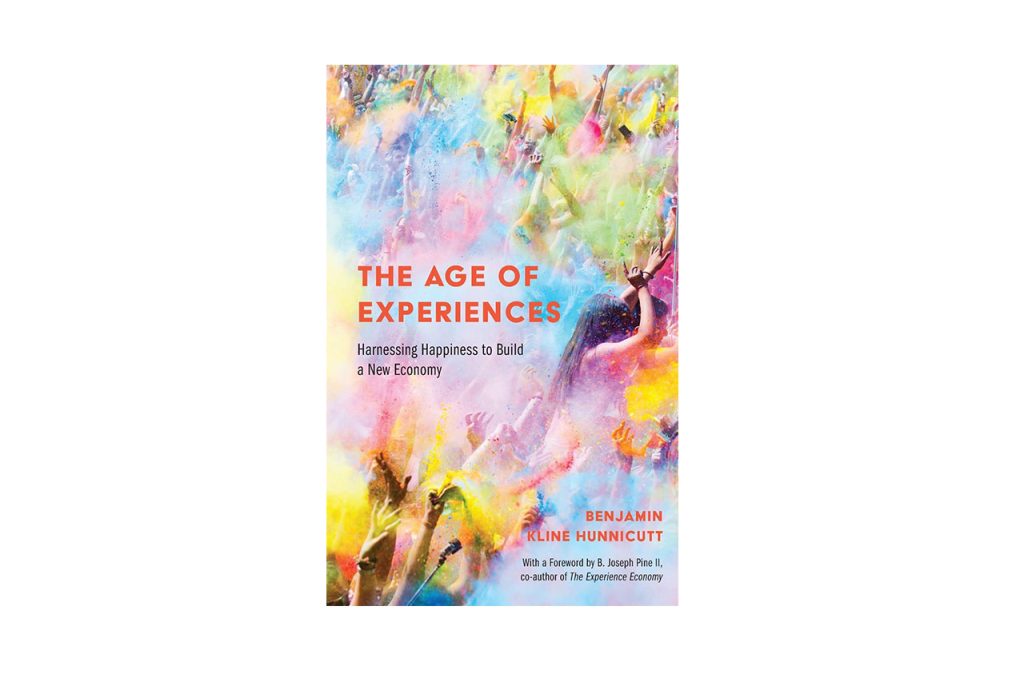
Hunnicutt, B. K. (2020). The Age of Experiences; Harnessing happiness to build a new economy. Philadelphia, PA: Temple University Press.
Hunnicutt expresses concern about the lack of integration of three remarkable twenty-first century developments—the dawn of the experience and transformation economies, the advent of the new sciences of happiness, and the coming of the postmaterialist culture:
“What I do in this book is help speed their convergence by showing how the free marketplace may support a new eudiamonic technology by more deliberate application of the findings of the new sciences of happiness to the design of experience products—products that will support the growth of the new experience and transformation economies and find ready markets in a growing postmaterialist culture.” (p. 1)
Hunnicutt, B. K. (2020). The Age of Experiences; Harnessing happiness to build a new economy
“A Eudiamonic Technology
The new sciences of happiness have made few efforts, however, to reach beyond traditional professional delivery systems based on the old therapeutic and clinical models and out of the private sector. Few attempts have been made to guide the free market, assisting the entrepreneur and individual firms, helping them design and deliver profitable experiences. Similarly, those in the experience economy have made surprisingly little deliberate use of these new sciences. This is the gap this book intends to bridge.” (p. 9)
Hunnicutt, B. K. (2020). The Age of Experiences; Harnessing happiness to build a new economy
Definitions From Academic Journals
2004
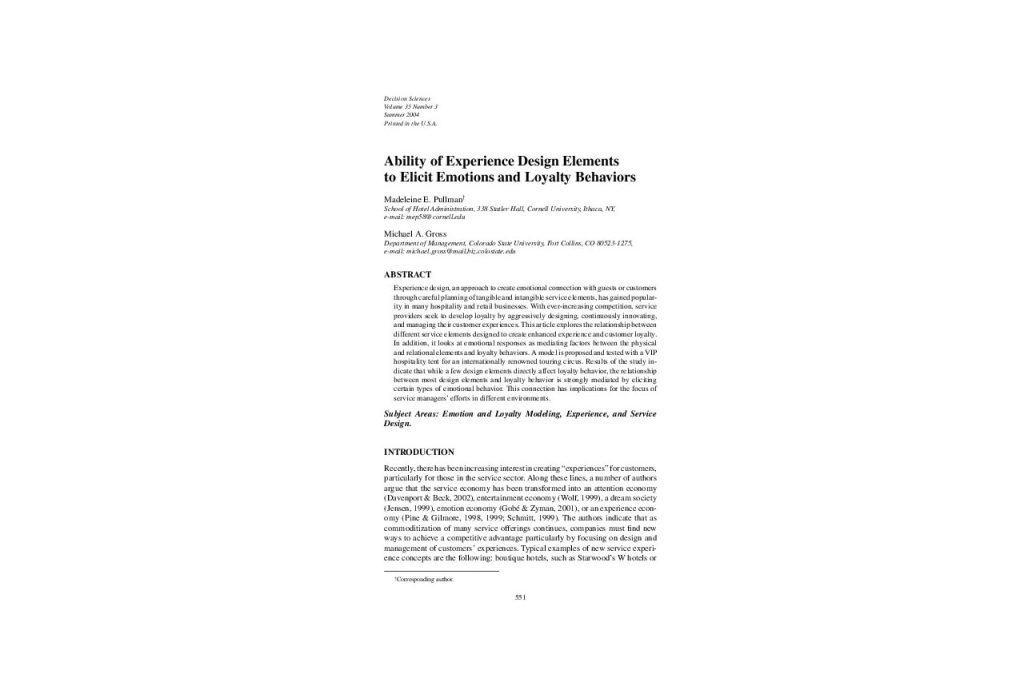
Pullman, M. E., & Gross, M. A. (2004). Ability of Experience Design Elements to Elicit Emotions and Loyalty Behaviors. Decision Sciences, Vol. 35, No. 3, Summer 2004, pgs. 551-578.
“Experiences are inherently emotional and personal; many factors are beyond the control of management such as personal interpretation of a situation based on cultural background, prior experience, mood, sensation seeking personality traits, and many other factors (Belk, 1975; Gardner, 1985; Hirschman & Holbrook, 1982; Zuckerman, 1971). Nevertheless, within management’s domain, the service designer can design for experience and operations manager can facilitate an environment for experience by manipulating key elements.” (p. 551)
Pullman, M. E., & Gross, M. A.
“To see what it takes to create a service “experience,” we first look at definitions of experience. Early research by Dewey (1963) focused on the event qualities of an experience. According to this work, engaging in an experience involves progression over time, anticipation, emotional involvement, a uniqueness that makes it stand out from the ordinary, and it reaches some sort of completion. Gupta and Vajic (1999) state that an experience occurs when a customer has any sensation or knowledge acquisition resulting from some level of interaction with different elements of a context created by a service provider.
Successful experiences are those that the customer finds unique, memorable and sustainable over time, would want to repeat and build upon, and enthusiastically promotes via word of mouth (Pine & Gilmore, 1998, 1999). Several researchers have focused on extraordinary or optimal experiences. Csikszentmihalyi (1991, 1997) refers to optimal experiences as “flow.” Flow experiences offer absorption, personal control, joy, values, spontaneity, and a newness of perception and process. The activity or goal object completely absorbs one’s attention and the experience has a level of skill and challenge. Arnould and Price (1993) define extraordinary experiences as those characterized by high levels of emotional intensity (usually triggered by an unusual event) and disclosure over time. The customer is never sure what the exact outcome will be due to the context, behavior of other customers, and unclear expectations. According to McLellan (2000), the goal of experience design is to orchestrate experiences that are functional, purposeful, engaging, compelling, and memorable. Similarly, Pine and Gilmore’s (1998) richest experiences have a “sweet spot” or elements of active and passive customer participation and immersive and absorptive connection in the context. The context should be mutable so each customer can choose the extent of participation and connection with people, physical objects, or technology.
They stress that all context elements should have a consistent theme and engage all senses. Similarly, Berry, Carbone, and Haeckel (2002) discuss the importance of clues of quality in experience design. These clues emanate from people and tangibles and communicate important themes or mission of an organization. For example, the clues for a medical facility such as the Mayo Clinic should signal competence, caring, and integrity (Berry & Bendapudi, 2003). Within a manager’s control, there are several common ideas relating to the design and management of customer experiences. Properly executed experiences will encourage loyalty not only through a functional design but also by creating emotional connection through engaging, compelling, and consistent context.” (pp. 552-553)
Pullman, M. E., & Gross, M. A.
2014
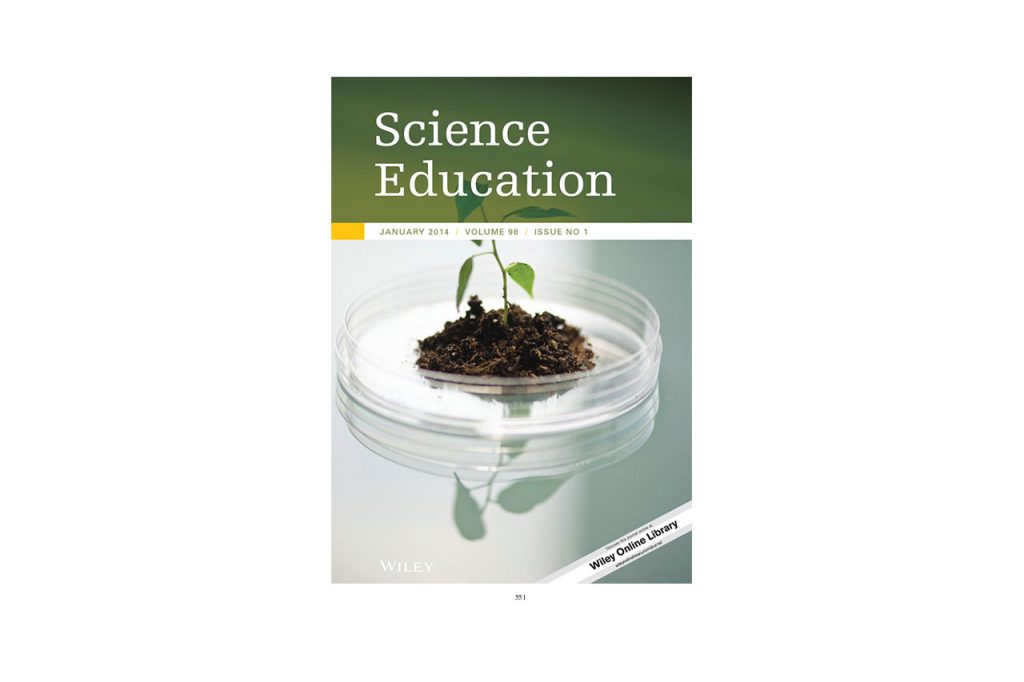
Roth, W.-M, & Jornet, A. (2014). Towards a theory of experience. Science Education, 98, 106—126.
“Accordingly, experience is not something that belongs to or is had by individuals but rather denotes transactions in and across space and time within irreducible person-in-setting units; and is perfused with affect that is not (only) the result of mental constructions.” (p. 106)
Roth, W.-M, & Jornet, A.
“Experience as treated by Dewey and Vygotskij, is unlike the common use of the term as referring to participation in events or activities and, in the process, having certain feelings. Instead, experience is a category of thinking, a minimal unit of analysis that includes people (their intellectual, affective, and practical characteristics), their material and social environment, their transactional relations (mutual effects on each other), and affect. Thus, experience is not something concealed within individuals, but extends in space and time across individuals and setting in the course of temporally unfolding societal relations, which themselves are perfused with affect (Vygotskij, 1935/2001).” (p. 107)
Roth, W.-M, & Jornet, A.
Duerden, M.D., Ward, P., & Freeman, P. A. (2015). Conceptualizing Structured Experiences; Seeking interdisciplinary integration. Journal of Leisure Research, 2015, Vol. 47, No. 5, pp. 601-620.
“The purpose of this paper, therefore, was first to review and then integrate this scattered literature into a structured experience framework in order to facilitate this scattered literature into structured experience framework in order to facilitate experience-related research with broader applicability for both commercial and public organizations interested in providing structured experiences.” (p. 601)
Duerden, M.D., Ward, P., & Freeman, P. A.
“In this paper, the term structured experiences is used to describe both the objective, interactive encounters between participants and provider manipulated frameworks (i.e., erlebnis: e.g., dining in a restaurant, attending a concert, playing in a softball tournament) and the resulting subjective participant outcomes (i.e., erfahrung; e.g., feeling unhappy with the quality of food at a restaurant, being emotionally moved by a song at a concert, deciding to return again next year to play in the same softball tournament and win the whole thing) of experiences.
According to this conceptualization, any time a provider (e.g., amusement park, recreation center, fitness trainer, parent) intentionally manipulates some aspect of an experience (e.g., setting, rules, equipment), it would be considered a structured experience. …Most, if not all, experiences are structured to some degree or another. Therefore, the term structured experience and experience are used interchangeably for the remainder of the paper.” (p. 603)
Duerden, M.D., Ward, P., & Freeman, P. A.
“The nature of the participant-provider interaction and the subjective nature of participant’s perceptions of experiences (Tinsley & Tinsley, 1986) are what make experiences such a complex phenomena.” (p. 612)
Duerden, M.D., Ward, P., & Freeman, P. A.
2017
Gary D. Ellis, Patti A. Freeman, Tazim Jamal & Jingxian Jiang (2017): A theory of structured experience, Annals of Leisure Research, pp. 3-4, DOI: 10.1080/11745398.2017.1312468
“Our structured experience theory extends Duerden, Ward, and Freeman (2015). We define structured experience as a planned invitation extended by an experience provider (i.e. a ‘manipulated framework’) for a heightened subjective state of motivation, attention, and emotion to occur. Examples of providers are tourism industry professionals, recreation professionals, parents when they provide immediate play experiences for their children, workers at specific attractions at festivals and events, or any other ‘tutor’ (Bishop and Jeanrenaud 1991; Nilsen and Dale 2013) in a recreation or play situation.
Our definition of structured experience parallels Rossman and Schlatter’s (2011, 5) definition of a recreation program: ‘a designed opportunity for a leisure experience to occur’. Experiences are structured (designed and staged) by experience industry professionals and by other tutors to yield immersive, engaging, or absorbing (Douglas 2007; Pine and Gilmore 1999, 2011; Reeve 2013) subjective experiences for others. Structured experience theory and the notion of recreation programming (Rossman and Schlatter 2011) both assume that knowledge and effective deployment of specialized strategies heighten and add value to participants’ immediate subjective experiences.
Within structured experience theory, structured experiences have the following characteristics:
– Structured experiences have definable beginning and ending points.
– Structured experiences have durations ranging from a few seconds to a few hours.
– Structured experiences proceed uninterrupted by other activities.
– Structured experiences are deployed (structured) through planned encounters.
Our conception of structured experience also fits well with Dewey’s ([1934] 1987, 35) description of a completed experience:
‘We have an experience when the material experienced runs its course to fulfillment. Then and only then is it integrated within and demarcated in the general stream of experience from other experiences. A piece of work is finished in a way that is satisfactory; a problem receives its solution; a game is played through; a situation, whether that of eating a meal, playing a game of chess, carrying on a conversation, writing a book, or taking part in a political campaign, is so rounded out that its close is a consummation and not a cessation. Such an experience is a whole and carries with it its own individualizing quality and self-sufficiency.’
It should be noted, however, that two of the examples from Dewey’s definition above depart from our conception of a structured experience. ‘Writing a book’ likely requires several days or weeks of effort and does not meet our standard of being uninterrupted. A particular bout or instance of writing could qualify as a structured experience, but writing an entire book does not. ‘Taking part in a political campaign’ is also a departure from our theory’s perspective on experience. An individual can participate in a number of structured experiences, such as fundraising events, debates, and discussions of strategy over an extended period of time. The individual events would be structured experiences, but the overall campaign would not.” (pp. 3-4)
Gary D. Ellis, Patti A. Freeman, Tazim Jamal & Jingxian Jiang
Every attempt was made to capture authors’ contributions to defining and/or describing “experience” or “experience design”. Apologies for any omissions or misinterpretation of content intended by authors – and as this is a work in progress, please let us know what we may have missed!

